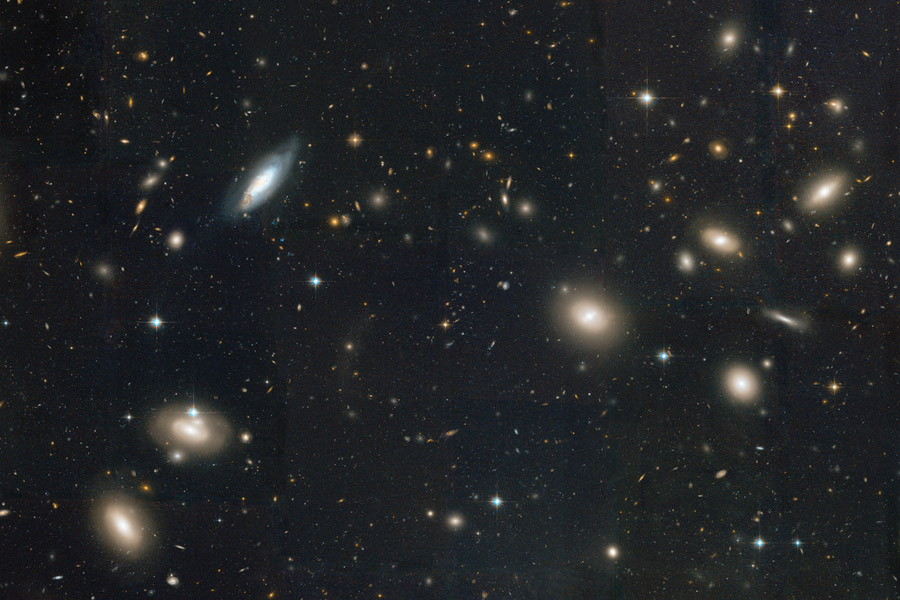
Inside the Coma Cluster of Galaxies
Credit: NASA, ESA, Hubble Heritage (STScI/AURA);
Acknowledgment: D. Carter (LJMU) et al. and the Coma HST ACS Treasury Team
Posted on 06/16/2008 1:58:38 PM PDT by sig226

Explanation: Almost every object in the above photograph is a galaxy. The Coma Cluster of Galaxies pictured above is one of the densest clusters known - it contains thousands of galaxies. Each of these galaxies houses billions of stars - just as our own Milky Way Galaxy does. Although nearby when compared to most other clusters, light from the Coma Cluster still takes hundreds of millions of years to reach us. In fact, the Coma Cluster is so big it takes light millions of years just to go from one side to the other! The above mosaic of images of a small portion of Coma was taken in unprecedented detail by the Hubble Space Telescope to investigate how galaxies in rich clusters form and evolve. Most galaxies in Coma and other clusters are ellipticals, although some imaged here are clearly spirals. The spiral galaxy on the upper left of the above image can also be found as one of the bluer galaxies on the upper left of this wider field image. In the background thousands of unrelated galaxies are visible far across the universe.

Ultimate Super Frisbee, Glowing Disk Edition.
I am stuned.
With DSL it didn’t take long either.
How anyone can look at that and think we are the only living things is beyond me.
It all came about purely accidentally. The question now is, Who or What caused that accident to happen?
To me it’s proof of God and yes I do believe there’s lots of life out there.
“How anyone can look at that and think we are the only living things is beyond me.”
Welcome to the Grand Illusion
Makes me homesick.
Wow, wow, wow...beam me up Scotty.
Especially when life is so abundant and diverse here, it's nearly under every rock, in every crevice, and every drop of water on the Earth.
I am seriously stuned.
I rarely comment on the apods, but I want you to know that they are passed on to at least 6 other people every day. Thanks.
This reminds me of the sensation caused by the release of the Hubble Deep Field image in 1995.

BTW, can you pick out the "Picture of the day" in the cited wider field image ?
It’s in the upper left corner, but both of the images may be distorted, so it is not an exact match.
Amusing short fiction to quell that question?
http://www.multivax.com/last_question.html
I don’t think the images should be distorted, since I believe the angular size is less than a square degree.
I performed the following exercise: I did a screen grab of the PotD image and the “wide” shot, and used MSpaint to get coordinates of three galaxies widely space in the PotD. I then fed the coordinates into a quicky program to give me the ratio of the ( arbitrarily designated ) 2nd and 3rd side to the 1st side. These came up 1.61/1.63 and 1.37/1.38 in the respective images, and I consider these values within the error of my MSpaint coordinates.
Did you try some kind of overlay? I note the images are definitely rotated slightly wrt each other.
I copied the large image and tried to draw a box around the small image area with a proportional sides. I couldn’t get it to match. You’re probably right about it being rotated, but both images are composites, so they may have introduced an error.
Disclaimer: Opinions posted on Free Republic are those of the individual posters and do not necessarily represent the opinion of Free Republic or its management. All materials posted herein are protected by copyright law and the exemption for fair use of copyrighted works.